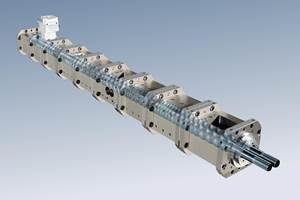He Who Hesitates…May Be Out of Luck
Editorial
Gardner’s capital-spending survey results project a big uptick in equipment investment this year. But processors who dawdle might not be able to buy what they want.
My first reaction when I read the manuscript of Steve Kline’s article on his 2015 capital equipment spending forecast was that NPE ’15 could not have come at a better time. My second reaction, as I dug deeper into the analysis, was that processors need to be decisive in their buying plans if they have their sights set on something in particular this year.
Steve is the director of market intelligence for Gardner Business Media, the Cincinnati-based parent company of Plastics Technology magazine and seven other specialized publications serving various aspects of the manufacturing industry. His article reports on Gardner’s recent survey on what kind of equipment processors will be looking to buy this year. A sidebar that accompanies the article looks at big-picture issues that seem to be in step with Steve’s spending forecast: Processors will invest $5.4 billion on primary processing machinery, auxiliary equipment, and molds this year, a $17% uptick over what was laid out in 2014.
I won’t delve into the details of Steve’s report in this space, as he covers the particulars of the survey results quite thoroughly in his article. But as you read the story, you might be tempted to ask yourself a question like this: “So sales of robots are going to increase a lot in 2015. That’s nice, but I’m a molder; I don’t make or sell robots, I buy and use them. How does that impact me?”
It impacts you, because as Steve astutely points out, an increased demand for machinery will influence how long it will take you to accept delivery and ultimately commission your new product, whether you will be able to get your “first choice” to begin with, and perhaps what you’ll have to pay for it.
“Processors should expect longer delivery on equipment orders as the year progresses,” Steve explains. “When demand increases rapidly … suppliers may have a hard time ramping up production fast enough. As orders build up in the pipeline, delivery times typically grow longer and longer. Because a significant amount of processing equipment acquired in the U.S. is imported, shipping times from overseas can exacerbate the problem.”
He continues, “Equipment and mold prices are likely to rise during 2015. This is a supply-and-demand issue. When demand rises rapidly and builders cannot increase the supply as fast as demand is rising, the price of machines and molds tends to increase to balance things out.”
And last but not least: “The longer processors wait before pulling the trigger on an order next year, the more unlikely it is that they will be able to buy their first choice of equipment.”
Steve’s bottom line? If you are serious about making an investment in capital equipment, it might be better for you to act sooner rather than later. Over the 28 years I have covered this industry, I have heard time and again—from both processors and suppliers—about investment plans that have either been delayed or scaled back. But as business conditions among processors continue to improve, any delay could put you at a competitive disadvantage. In other words, there are reasons beyond delivery times and purchase price for you to act quickly.
Am I recommending you come to NPE with your checkpoint and a purchase order in hand? Not necessarily. But think about having them in your pocket.
Related Content
How to Configure Your Twin-Screw Barrel Layout
In twin-screw compounding, most engineers recognize the benefits of being able to configure screw elements. Here’s what you need to know about sequencing barrel sections.
Read MoreWhat to Know About Your Materials When Choosing a Feeder
Feeder performance is crucial to operating extrusion and compounding lines. And consistent, reliable feeding depends in large part on selecting a feeder compatible with the materials and additives you intend to process. Follow these tips to analyze your feeder requirements.
Read MoreProcessing Megatrends Drive New Product Developments at NPE2024
It’s all about sustainability and the circular economy, and it will be on display in Orlando across all the major processes. But there will be plenty to see in automation, AI and machine learning as well.
Read MoreGreen’s the Theme in Extrusion/Compounding
The drive toward circular economy is requiring processors to make more use of PCR. Machine builders at K—across all extrusion processes—will be highlighting innovations to help them do just that.
Read MoreRead Next
Advanced Recycling: Beyond Pyrolysis
Consumer-product brand owners increasingly see advanced chemical recycling as a necessary complement to mechanical recycling if they are to meet ambitious goals for a circular economy in the next decade. Dozens of technology providers are developing new technologies to overcome the limitations of existing pyrolysis methods and to commercialize various alternative approaches to chemical recycling of plastics.
Read MoreWhy (and What) You Need to Dry
Other than polyolefins, almost every other polymer exhibits some level of polarity and therefore can absorb a certain amount of moisture from the atmosphere. Here’s a look at some of these materials, and what needs to be done to dry them.
Read More





















